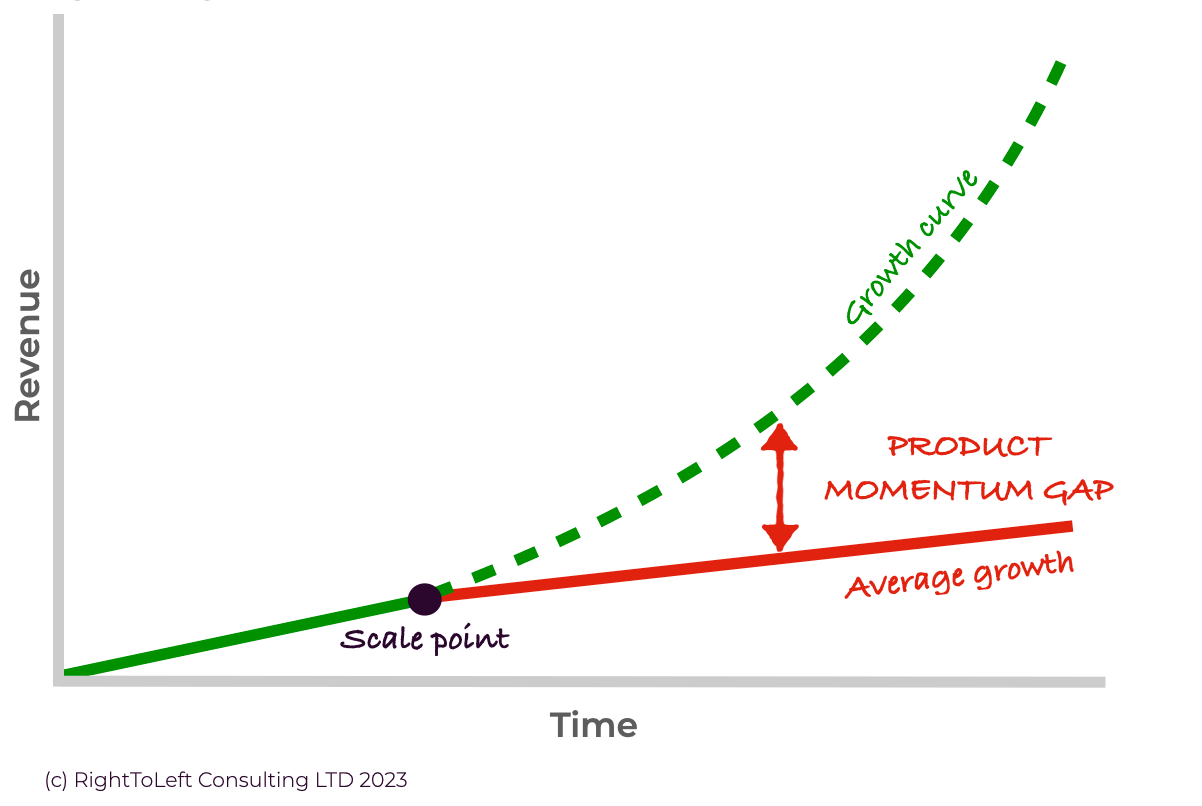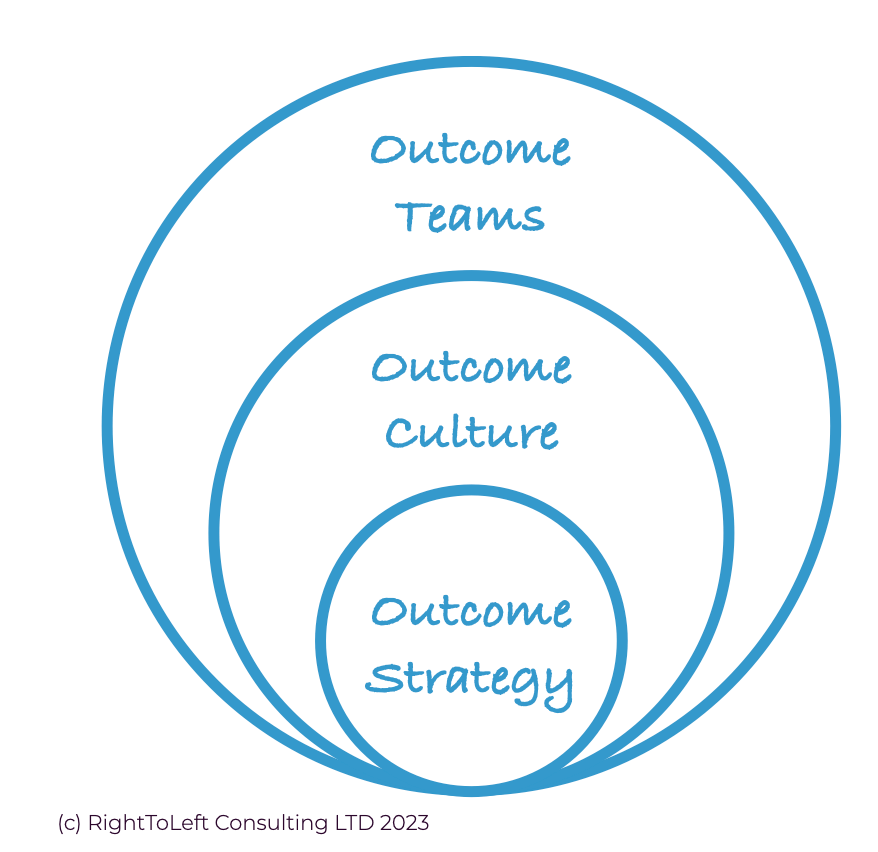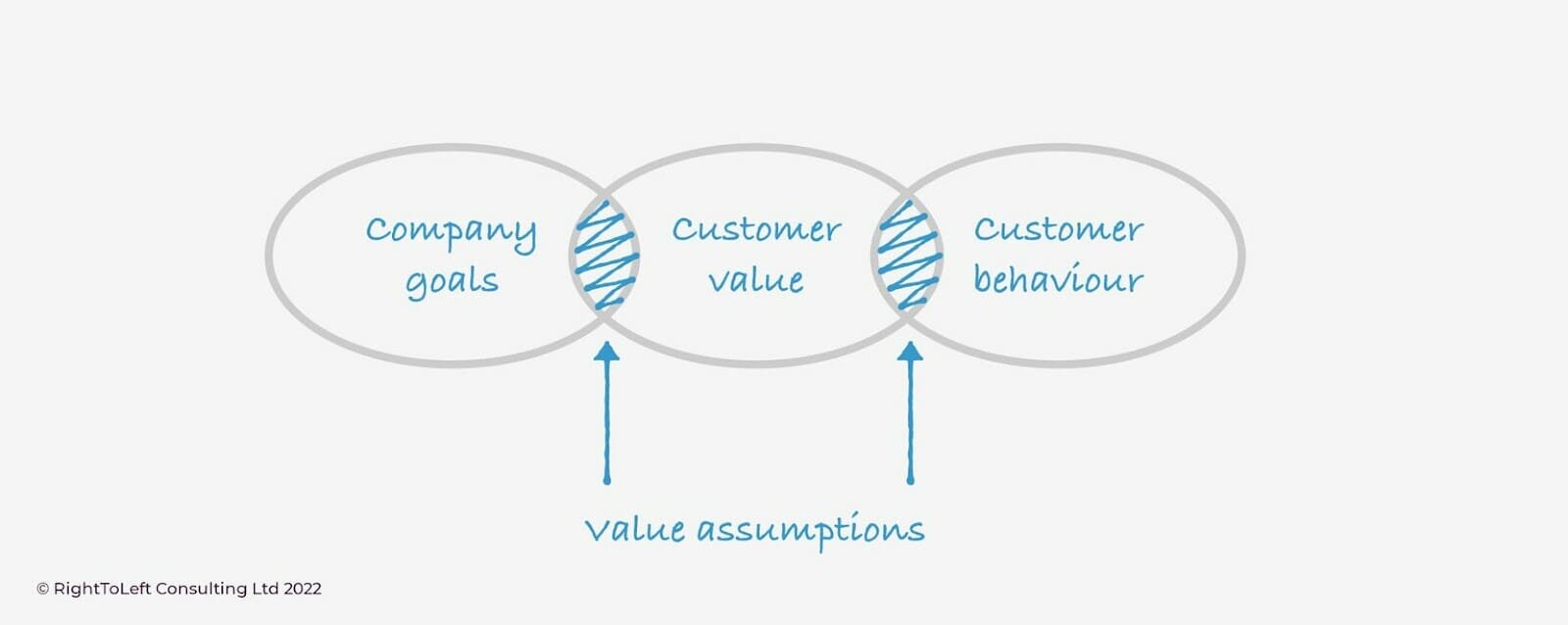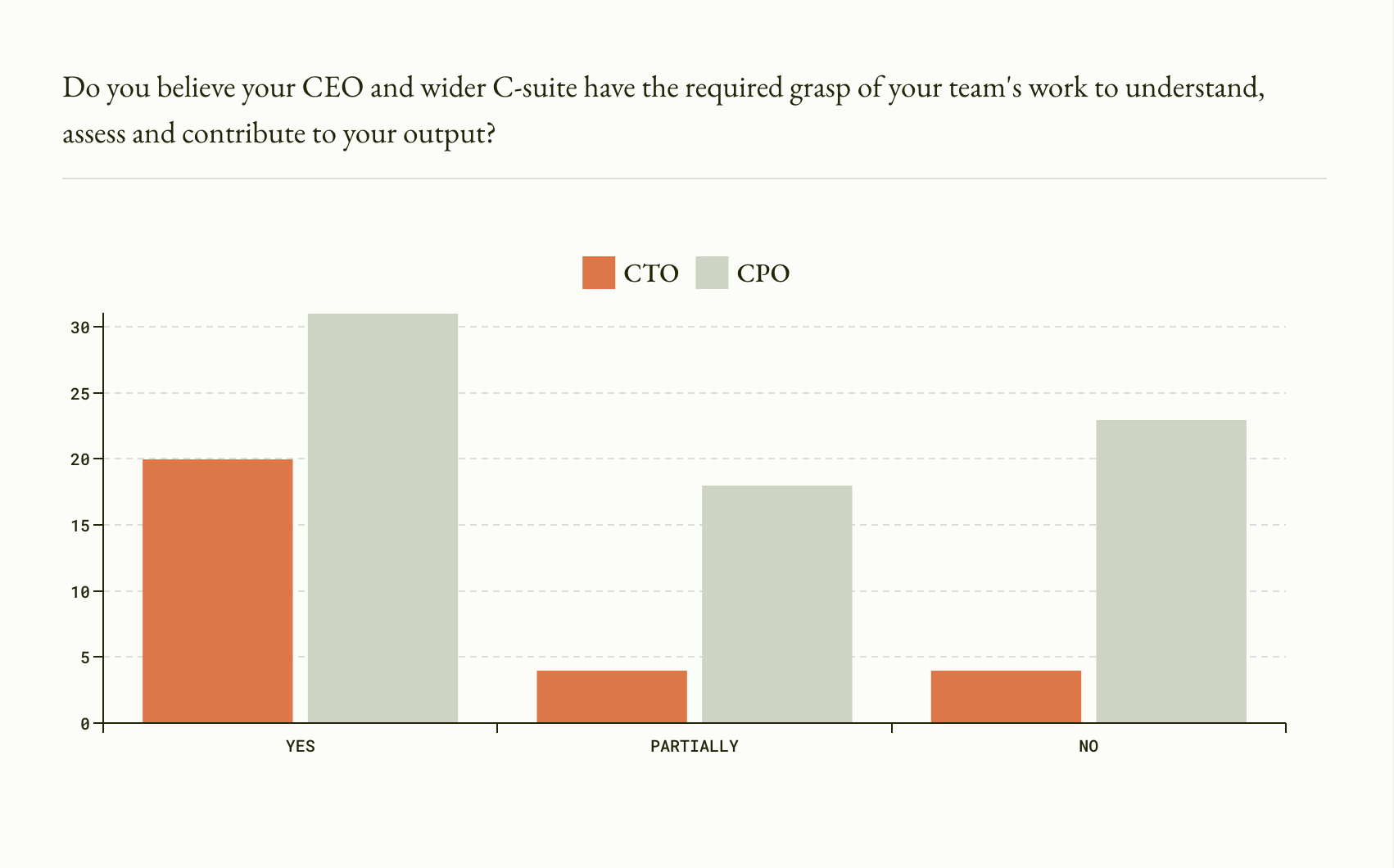In his deep dive column, Dave Martin, Founder and Executive Product Coach at RightToLeft discusses how to achieve an outcome-led approach in product management.
Again and again, product leaders tell me they want to be product-led, outcome-driven, outcome-first, or outcome-led (they all mean the same thing).
Is this outcome-led approach attainable, or is it a utopia dreamed up by thought leaders? Product leaders tell me that outcome-led feels impossible to achieve. It can make them question their competence and spiral into imposter syndrome. It’s tough to ask an organisation to change how it thinks.
I coach people in product leadership roles, and typically they believe that an outcome-led approach is the best way to support their team and the business they work for. They understand that good things follow when an organisation prioritises customer value by putting the product at the heart of the company. They recognise that, with an outcome-led approach, the organisation has a greater chance to grow faster and have a lasting impact on the world.
Unfortunately, many of them also tell me they can't make an outcome-led approach stick in their organisation. They know how they want to run their product function, but something gets in the way. How do they overcome whatever is stopping them?
It is attainable
An outcome-led approach should mean that products solve real customer problems better than anything else. Being outcome-led avoids the hard work of product engineering ending up as an alarming statistic – for example Pendo Adoption Research has found that 88% of features are rarely or never used. Let’s give that statistic some real numbers: according to ScaleXP, series A companies with around $6m ARR spend 41% of ARR on R&D, meaning that, staggeringly, a $6m ARR startup wastes over $2m of its R&D spend.
Many companies that have adopted an outcome-led approach go on to enjoy enormous success. For example Datadog, Xero, Slack and Dropbox are all SaaS businesses following an outcome-led approach that went to IPO. I’ve also coached at a few post-IPO tech businesses, and they continue to be outcome-led.
There are also plenty of success stories at the other end of the scale. Many startups at the series A or B stage demonstrate that an outcome-led approach delivers success. One recent example I was personally involved with is ContentCal, acquired by Adobe in 2021.
Accept that transformation has to happen
Considerable – company-wide – changes are needed to create new organisational capabilities. The shift to an outcome-led approach to product development has a company-wide impact and is generally described as a transformation. It must reach beyond the internal workings of product engineering.
Total CEO or senior leadership support is essential to drive a transformation. Without it, the change probably won’t happen.
How did we get into this mess?
When I speak to CEOs they often recall past organisational problems which arose from corporate design or hiring mistakes. These mistakes took the company dangerously off target, and the senior leader reacted by focusing on increasing accountability.
Unfortunately these attempts to create accountability usually employ deadlines or lists of features and a focus on the wrong thing – outputs. This output obsession wastes money, kills motivation, and drives the best talent away.
I also hear how organisations found early success through a sales-led approach, building whatever features the customer asked for to close the deal. The short-term impact is revenue growth. But this approach rapidly burns cash and destroys the business model as the organisation scales.
This sales-led prioritisation leads to a product that satisfies a few companies rather than a target market – and the buyer often never uses the features built to close the deal. Sales-led approaches eventually turn a B2B company into a software agency with SaaS pricing; such a beast has ugly unit economics and fails to see any proper growth. These companies grow and then become stagnant, a significant contributor to getting stuck in the Product Momentum Gap.
In order to get buy-in from senior leadership for an outcome-led transformation, you must directly address the scar tissue from past challenges.
What are you trying to transform into?
Companies that build great products operate very differently from those that don't. The difference is found in more than just the product and engineering functions.
Great product companies avoid a command and control approach. Their leaders don’t attempt to provide all the answers; instead, they empower their teams to solve the most valuable problems. It’s not that leadership doesn’t get involved in the detail, doesn’t demand high quality or challenge thinking – rather the solution is not dreamed up in an executive meeting for the product engineering teams to build.
To transform to an outcome-led approach an organisation must change its basic management paradigm. This means reconfiguring team governance and company culture so that product engineering teams are empowered and supported.
At the same time, the way that product engineering teams operate must change: they must work collaboratively across business functions rather than in silos. Engineers and designers must be encouraged to propose solutions to solve real customer problems, and the product manager must ensure they address the most strategically valuable issues. The product manager must also ensure the solutions work for the customer, while guaranteeing longer-term business viability.
The target here is for the organisation to become one that can maximise market or technology opportunities to benefit its customers and shareholders. In such an organisation, there's a focus on learning and the ability to innovate is baked into the culture. Many of the mental and restrictive process-oriented limitations that held the organisation back will have gone. The aim is to process light, driving creativity and autonomy.
Product leaders must foster trust up, down and sideways in the organisation
Transforming the product engineering approach requires new levels of trust with leadership and between the disciplines of product management, product design and engineering. The product leader needs to work with the support and alignment of the technology leader.
The relationship between product teams and leadership must be one of trust. This trust provides confidence that teams:
- Are working on strategically valuable problems.
- Have a sense of importance and are making progress.
- Will ship products customers want.
- Are creating strategic value.
Product leaders working with technology leaders must ensure transparency and opportunities for feedback. This gives the perception of control while preventing old C-suite habits from creeping back. Often leadership teams that previously operated a command and control approach felt that the above was firmly in their control – it wasn't, but perception is everything.
It sounds challenging, and it is. Most CPOs and VPs of Product have never tackled changing leadership behaviour before, and external support can often be vital to success here. The product leader must aim to create high levels of alignment, reinforce new habits and remind everyone of small wins. Repetition of the message and entrenching habits is critical to success.
Small steps to foster experience and gain maturity
I see that the best product leaders have a healthy obsession with strategy, culture and team. This supports improved levels of trust and empowers product engineering teams.
Outcome product strategy
Typically, a product strategy articulates the customer value proposition to support the business goals. Then a plan is agreed and expressed as a product roadmap. Success becomes defined by ticking features off a list rather than achieving the desired outcome for the customer. This approach never builds great products or sustainable high-performing companies.
To find a better approach, let’s ask the question: "What does a product engineering team directly impact when they release a product or feature?".
Product engineering teams seek to modify and create user behaviour when they release new features. The user behaviour, in turn, creates customer value that customers pay for. In some cases, the user and the customer are the same individuals.
To set teams up for success, the product strategy needs to provide more actionable guidance than typical, it needs to include a plan of which high-level user behaviours need to be modified or changed. These behaviours are domain and company-specific. To know if our releases are delivering the strategy, the behaviours are measured with leading value indicators. The best product companies express most product strategy initiatives with behaviour measures. This avoids the common mistake of giving teams lofty goals, such as "make £1m ARR in 3 months". Lofty goals like this lack strategic direction; they also scare teams and can lead to poor results.
Outcome culture
Paradigms are only changed through repeatedly focusing on the purpose and practising the habits, so transformation must focus on habitual activities to reinforce the outcome-led paradigm.
Eventually, the habits become unconscious, and the paradigm is reset. The aim is to create alignment, transparency and continuous improvement.
The following tips will help you to create an outcome culture with high-performing product teams:
- Product teams show their work in progress outside the team and welcome constructive feedback. It must feel safe to share.
- Product teams have at least weekly direct customer interaction through interviews, prototypes and other experiments to capture evidence and inform team-level decisions.
- Product teams form hypotheses to drive learning and development. Every release has a hypothesis behind it, driving a learning mindset and making it safe to fail fast.
- Product managers, engineers and designers demonstrate high customer empathy.
- Product leaders celebrate learning and results. They only get excited about releasing code once people have used it.
- Product leaders and technology leaders set clear, aligned principles and non-negotiables. They live by them and repeat them like a broken record.
- Product leaders consistently repeat the vision and strategy, creating purpose and alignment.
Outcome teams
Team governance is a significant area of change when breaking free from feature-led teams and the command and control process. Product engineering teams no longer act as an order-taking function to manufacture features. Instead, they are recognised as being best placed to know technology opportunities and deeply understand customer problems. Outcome-led teams have the autonomy to find the best solution to achieve the desired outcome.
However, we must recognise that product engineering is a vast investment area for tech companies and so needs appropriate oversight. An average small product engineering team represents an annual £500,000 investment. Without governance that provides support, team members and product managers can feel overwhelmed by the responsibility.
To set outcome teams up for success, leaders need to:
- Set outcome-oriented team objectives (ideally user behaviour) without dictating solutions.
- Make objectives narrow or broad to match the team's experience, maturity and goal flexibility.
- Create space for the team to learn and decide what features or enhancements will achieve the objective.
- Create accountability by tracking leading value indicators and value-creating activities such as putting software in customers' hands or capturing new evidence to inform decisions.
- Obtain weekly intentions of each team and provide access to leadership to support the teams.
- Coordinate regular support and review meetings with each product engineering team involving all its members.
There will be skills the product engineering team needs to include to function effectively as an outcome team. These need to be addressed through training, coaching or hiring.
Are you an outcome leader?
Repeatedly, I see that product leaders get stuck in detail. They need help to recognise their progress.
From our work with hundreds of product leaders, RightToLeft has formulated an Outcome Leader Score. It’s designed to help you be aware of your current situation and inform your next area of improvement. It can be used as a starting point and regularly recognises your progress and hard work. Please go through it.
Finally, remember that transforming to outcome-led is a marathon, not a sprint.












